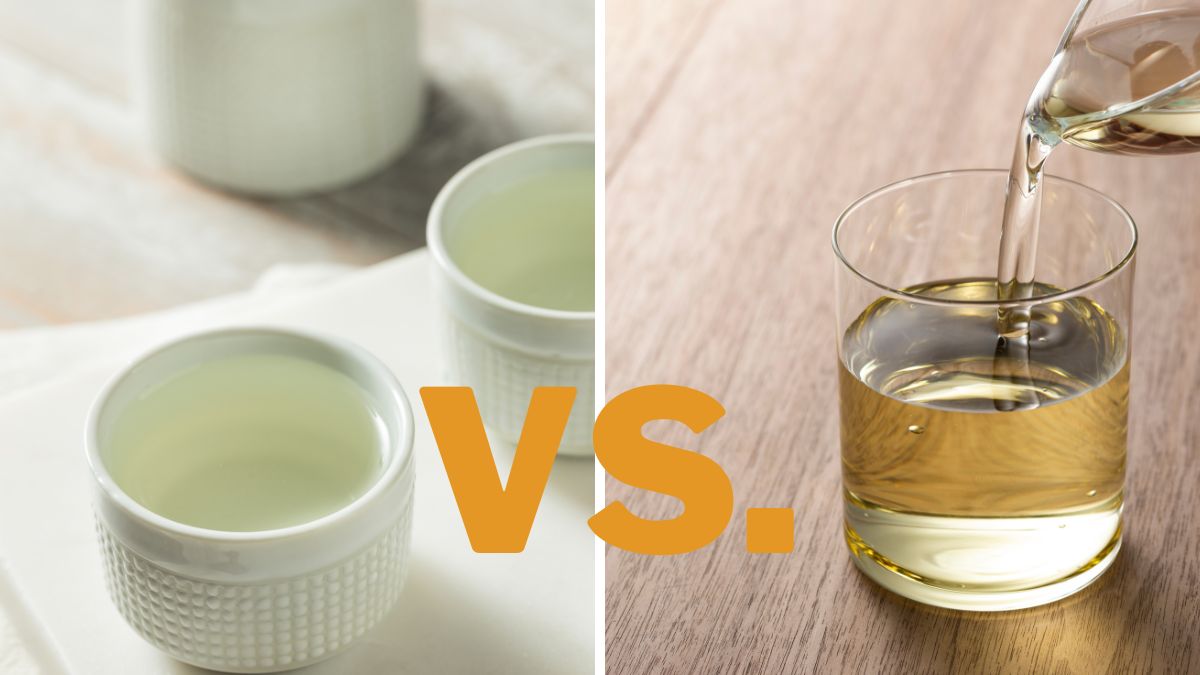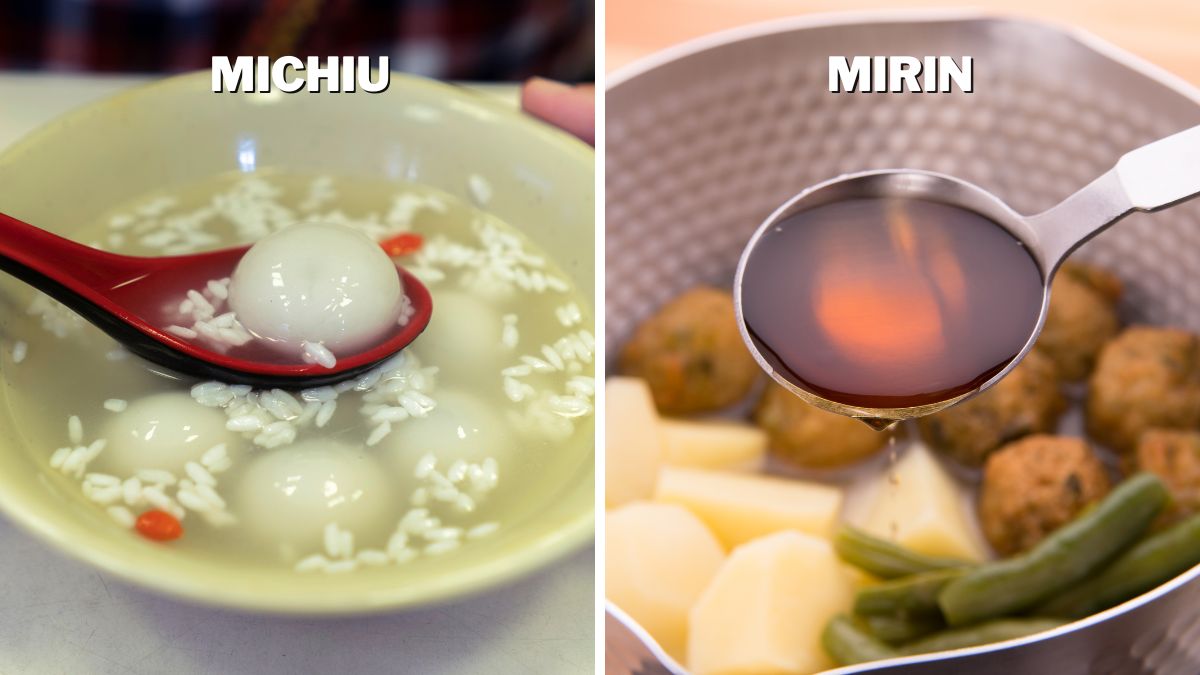Michiu vs. Mirin: Differences & Uses

As you surely know, Asian cooking boasts a wide range of ingredients. Some of them may seem interchangeable, but they actually aren’t, which sometimes confuses me. The two I’ve been exploring lately are Michiu and Mirin, both traditional Chinese and Japanese condiments with similar origins and several important-to-know differences. So, today, you’re in luck because I am about to demystify these two essential ingredients in Asian-style meals. So, what’s the difference between Michiu and Mirin?
Michiu has a more intense alcoholic taste, while Mirin has a rich, mild sweetness. Mirin is best used as an ingredient to bring out the flavor in sauces, marinades, and dishes like meat, seafood, noodles, and veggies, while Michiu is better suited as a drink or used to enrich the taste of meat, fish, and shellfish.
Although similar, Michiu and Mirin are different products, each with its own distinct features and uses. So, let’s take a closer look at them!
Are Michiu and Mirin the Same?
Unless you’re actively participating in the eating culture, an Asian pantry can initially be a little overwhelming since many of its ingredients can seem the same or at least interchangeable. If you have ever tried to use Mirin for something only to realize later that it’s actually different from Michiu, don’t worry because you are not the only one to do so.
In short, Michiu and Mirin are two Asian condiments with similar origins but distinct tastes, uses, and alcohol content. Based on this, they are also used for different purposes. So, let’s have a look at those differences more thoroughly.
Differences in Taste
When it comes to taste, Michiu and Mirin are quite different. Michiu has a more complex and slightly sweet flavor. It’s great for cooking both savory and sweet dishes and can be used to marinate fish or give sauces a richer flavor.
On the other hand, Mirin is sweeter than Michiu, and it’s primarily used in Japanese cuisine as an addition to teriyaki sauces or noodles since it gives a slightly better and milder taste than Michiu. It has a slight honey-like flavor that can enhance the taste of any dish.
Differences in Uses

When it comes to uses, Mirin definitely has more of them, at least when comparing it to Michiu.
The most notable similarity is that both Mirin and Michiu can be used in simmering, searing, roasting, grilling, and baking.
Michiu is most often used in braised dishes like pork or beef, fish, and shellfish because its alcoholic flavor neutralizes the strong fish smell. It adds sweetness, tenderness, and a glossy sheen to dishes, and it’s also a frequent ingredient in soups. It also helps to deodorize meat and veggies in some recipes.
On the other hand, Mirin, although sweeter, is also milder in taste than Michiu, which is why it is excellent for glazing dishes like grilled fish or teriyaki chicken. Plus, it is excellent to be added to rice and noodles or prepared with veggies. However, Mirin’s sweet taste means you should be careful with sauteed dishes because they just might become too sweet!
Are Michiu and Mirin Interchangeable?
This is a tricky question because, on the surface, Michiu and Mirin may seem interchangeable. They both contain alcohol, sugar, and other ingredients that give the liquid a sweet flavor. However, they are not the same.
While they can be used to enhance the flavor of certain dishes, they are not precisely interchangeable due to their distinct differences.
Michiu is specifically made with glutinous rice and spring water fermented to create alcohol by adding yeast. It has a mild sweetness and a slight hint of grain flavor, and an alcohol content of up to around 20%.
Mirin also contains glutinous rice but with lower alcohol content. Mirin also contains more sugar than Michiu, making it sweeter but less alcoholic. Mirin is light golden yellow and is often used in dishes such as teriyaki to add a sweet glaze to food.
In conclusion, while Michiru and Mirin have some similarities in ingredients and uses in cooking, their distinct flavors and different levels of sweetness, intensity, and alcohol content make them not completely interchangeable when it comes to cooking or cocktails.
